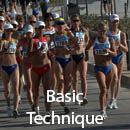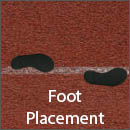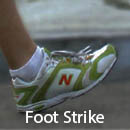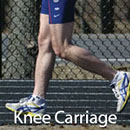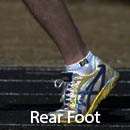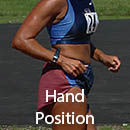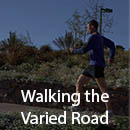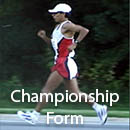Race Walking Technique
Learning to Walk
Obey the Definition First
Becoming a legal race walker requires walking without violating either part of the USATF definition. Most likely, when you start to race walk, the previously underutilized muscles required to execute the technique are not strong enough to propel you properly at fast speeds. Most beginning walkers’ initial paces are in the range of 10:00 mins/mile to 15:00 mins/mile; thus initially you are not likely to break the first part of the definition requiring constant (to the human eye) contact with the ground.
The second part of the definition of race walking is the one that gives most novice walkers problems. Therefore, we begin the walking technique lesson here. Once you master the technique required for the second part, then focus on all the other techniques explained here to help you walk faster.
Observe Figures A to F. They illustrate the correct positioning of my leg the instant my left leg strikes the ground, as my body passes directly over the leg and beyond, and just as my left foot leaves the ground behind my body.
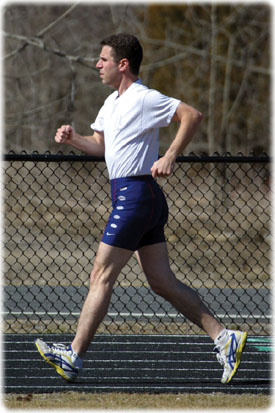
Figure A
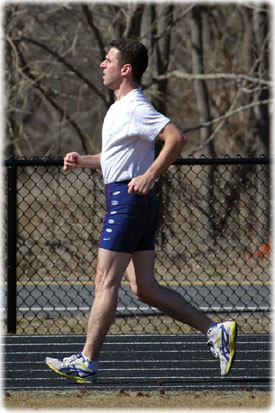
Figure B
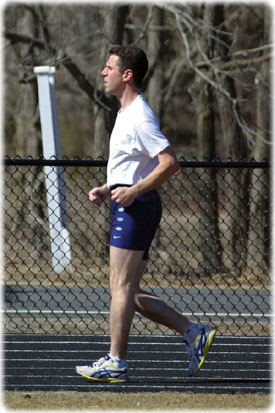
Figure C
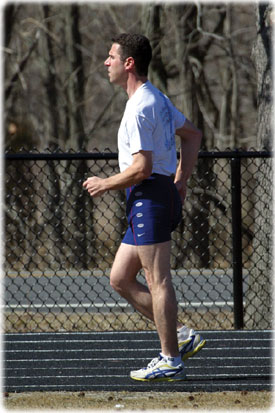
Figure D
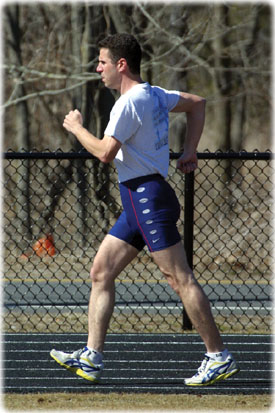
Figure E
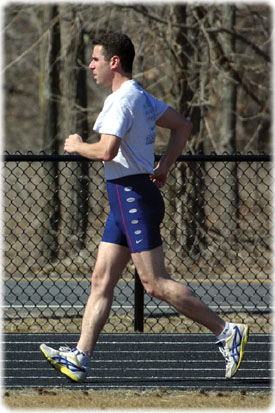
Figure F
But what looks simple on the page in front of you can actually be a little tricky to master, as least at first.
Look at Figure A, where my heel has just made contact with the ground. A few things happened simultaneously. Just before contact, as my leg was swinging forward, it straightened, with toes pointed up (about 45 degrees from the ground), while my heel struck the ground. Achieving this smooth synchronized action is the key to success.
Between Figure A and Figure C, the body moves forward, over the left leg. This is the second point at which walkers tend to violate the rules of race walking. The leg must remain straightened until it is in the vertical position. In Figure C, my leg is almost in the vertical position, while it remains straightened.
Once the leg is beyond the vertical position, as in Figure D, you may bend it. However, when it comes time to lift your foot off the ground, if your leg is still straightened, you get an extra thrust forward by pushing off your rear foot (Figure E). Through proper flexibility and strength your leg stays straightened longer and you obtain this advantageous thrust. Ideally, the leg remains straightened until the heel of your rear foot lifts off the ground.
Figure F shows my stance, just after rear-foot push off, with an obvious bend in my leg. It is impossible to race walk with any efficiency and keep the leg straight as it swings forward. Notice that as my rear (left) leg leaves the ground, my front (left) leg is already in position. Also, note that the legs do not create a symmetrical triangle. More of my stride is behind my body than in front. This is achieved through proper hip action, which will be explained shortly.
Race walk with the techniques explained thus far and you can tell people you are a legal race walker, albeit not a very fast one yet. YET! Keep reading and you’ll get faster.

